The first Sony A1 reviews and early impressions are starting to roll in – and with the 50.1MP full-frame camera offering so much in the way of features and depth, we've rolled them all together into this meta-review of Sony's flagship Alpha so far.
It's still too early for full reviews of the Sony A1, but the first YouTube hands-ons have all focused on slightly different aspects of the camera – so we've picked out the best one on each subject, from design to video and stills, and summarized their early findings below.
Everything from handling to burst shooting, autofocus, 8K video and stills performance is covered, giving us a solid overview of how the Sony A1 is shaping up – and whether it can possibly live up to its early hype.
We'll be giving you our own findings once full production Sony A1s are available and the Adobe support for its raw files has improved – but for now, here's a greatest hits tape of YouTube's best Sony A1 videos so far.
Design (Kai Wong): familiar styling, incredible EVF
- Basically the same grip and shape as the Sony A7R IV and Sony A9 II
- EVF is "like having a TV strapped to your eye"
- New menu system could so with a bigger rear screen
Kaiman Wong's typically entertaining first look at the Sony A1 focuses heavily on its design, particularly in relation to the Sony A9 II.
He found the grip to be as good as the latter because "they're basically the same shape", but said he expected the design to be a bit more "woah" for the $6,500 / £6,500 / AU$10,499 price tag.
As he points out, the only main differences from the Sony A9 II are the card slots (the A1 takes the new CFexpress Type A cards) and a slightly different focus mode selector, whose button might be tricky to unlock if you have fat thumbs.
Another minor downside is the 3-inch, 1.44-million dot rear screen, which only tilts rather than fully articulates. He says this screen is mostly fine, but that "given others have moved into bigger than 3-inch screens with 2-million dots, it'd have been nice to put that into a six-and-a-half grand camera".
One final gripe is that new menu system, which we first saw on the Sony A7S III, could do with a bigger screen. He notes that it "feels a bit claustrophobic", as there's a lot of info to cram into a 3-inch display.
But all is forgiven when he turns to the "magnificent" EVF, which is "like having a TV strapped to your eye" and is "smoother than an oiled-up dolphin" at its maximum 240fps refresh rate. It sounds like that EVF alone could be a reason to upgrade from other Alphas.
Burst shooting (Jared Polin): Sony's stacked sensor is amazing
- Reviewing 30fps bursts is "like watching a video"
- Sony A1 produces larger files than Canon EOS R5
- Using SD cards with the A1 should be avoided if possible
Jared Polin was keen to stress that his tests weren't a review, due to the incompatibility of Sony A1's raw files with Adobe Lightroom at the time – but his hands-on preview provides a good overview of the A1's burst shooting performance.
In a very tough indoor scenario, with dim lighting and football players wearing masks, he found the A1's continuous shooting to be "very good in the situations I used it in". He found the results at ISO 6400 to be "perfectly fine" and would be "happy to shoot at those higher ISOs".
There were a couple of minor usability criticisms. Firstly, the A1's 30fps mode is only available when shooting uncompressed raw – but when you switch the A1 into its H+ shooting mode, the camera doesn't automatically switch to the compressed file format. Perhaps this is something that can be fixed with a firmware update.
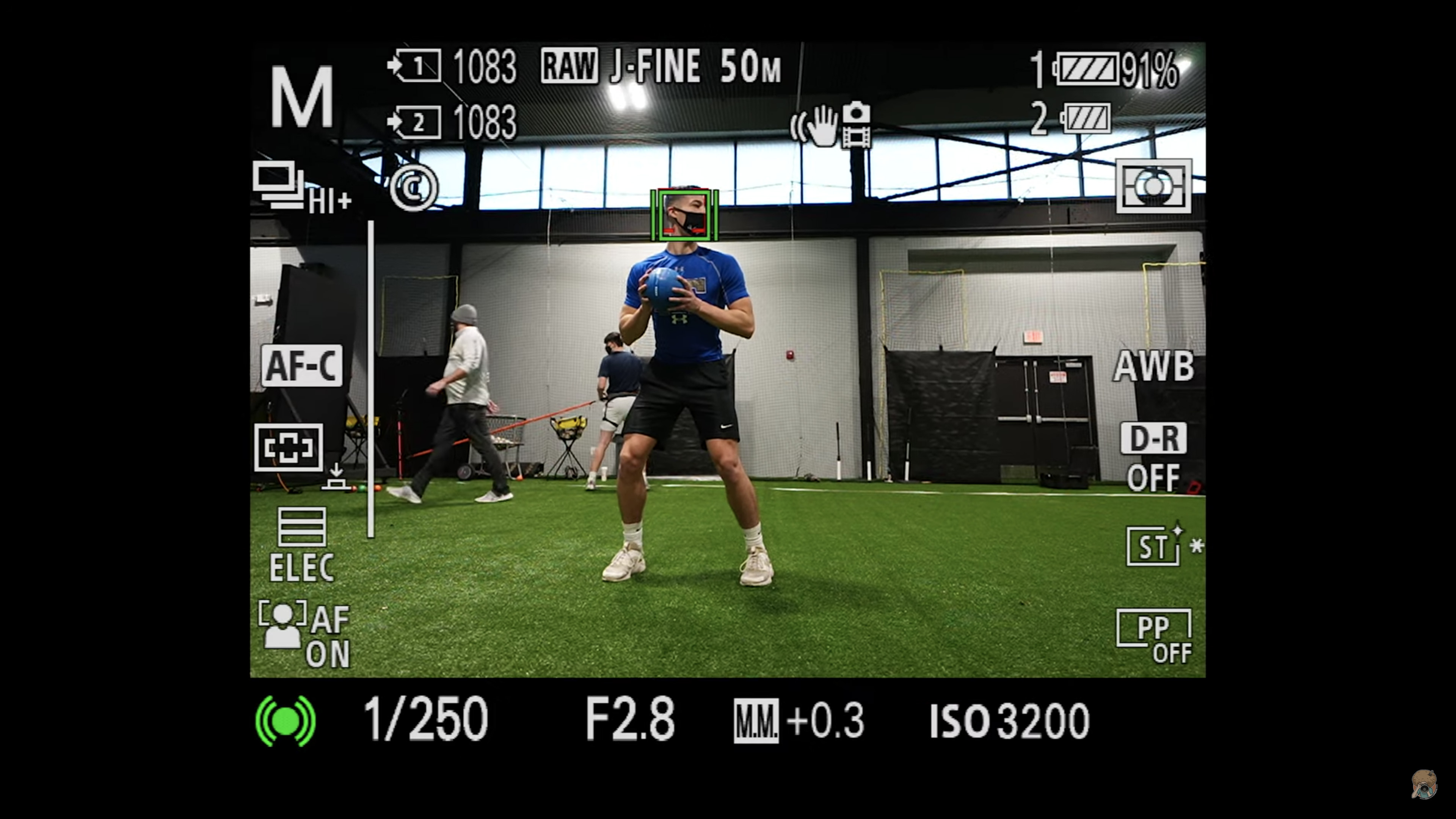
Also, he found that the A1's buffer doesn't write as fast to its CFexpress Type A cards as the Canon EOS R5, because the latter used CFexpress Type B cards that are twice as fast. That said, he didn't outrun the buffer at all during his shoot, even though the A1's file sizes are bigger than its Canon rival's (around 60MB for compressed raw, or 110MB for compressed raw).
He warned against using SD cards in the Sony A1 "unless you need to", as the write speeds are too slow for burst shooting. But he did also praise the A1's shooting speed for action and sports, pointing out that while the Canon EOS R5 can shoot at 20fps, this is for compressed files – the A1 can match that speed with uncompressed raw shots.
This led to him concluding that it's "amazing what this stacked sensor can do and what it means for the future of photography". But also that the Sony A1 makes the Canon EOS R5 look really good, due to its lower price tag and the "comparable" autofocus performance.
Autofocus (Julia Trotti): Best AF on any Sony camera
- Impressive 88% AF hit-rate from 30fps burst shooting
- Animal Eye AF worked very well on cats
- Bird Eye AF success was a little more mixed
Australian portrait photographer Julia Trotti has produced a particularly good overview of the Sony A1's autofocus performance – partly because range of the subjects shown in her outdoor shoots.
For shooting people, she found it to be "the best autofocus that I've tried from any Sony camera so far", with the results from burst shooting particularly impressing. For example, in one 125-photo burst taken using the Sony FE 20mm f/1.8 G, only 15 shots were out of focus, and most of these still had focus on the subject's face.
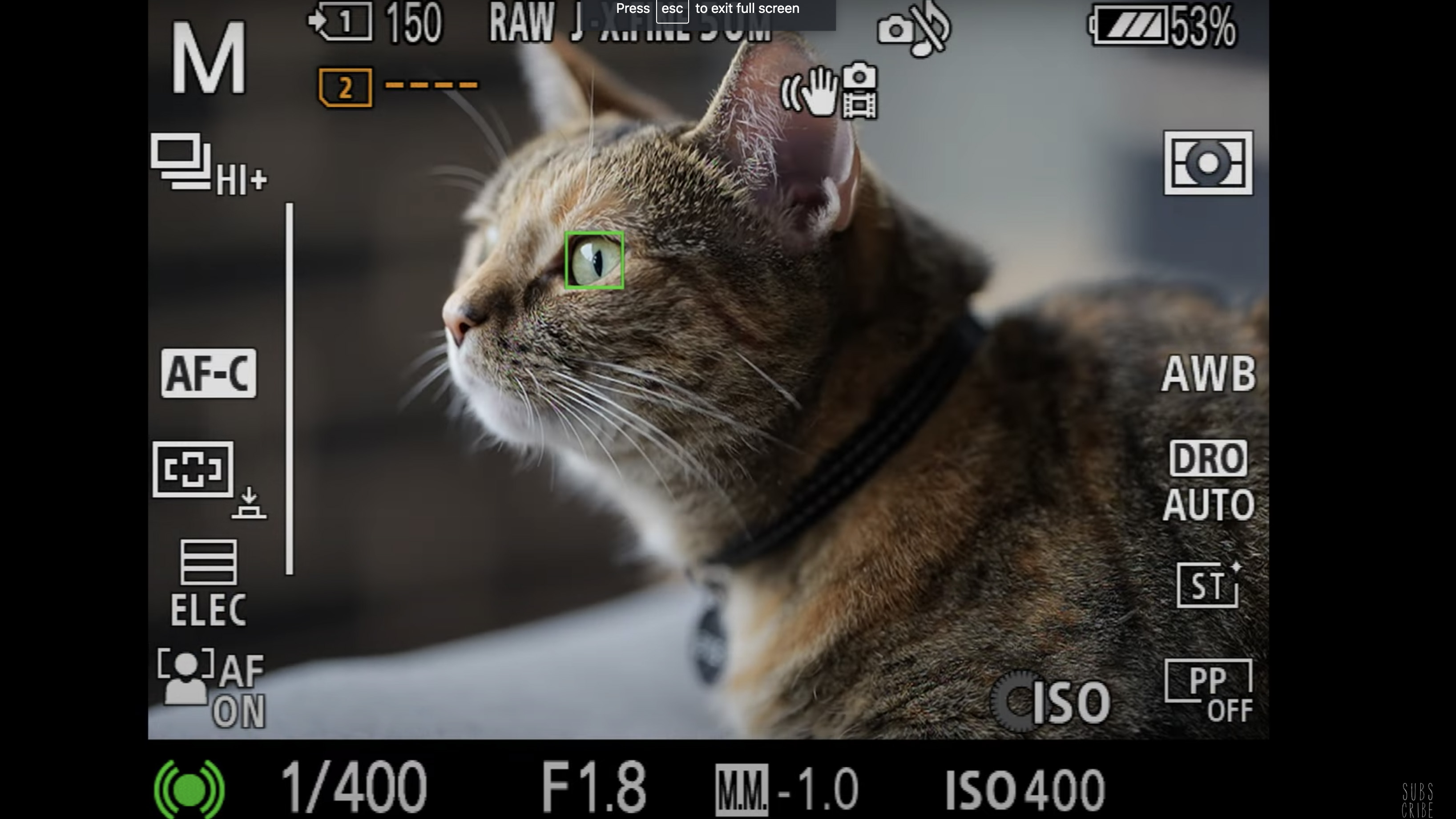
Animal Eye AF also impressed, with a cat photo shoot showing how sticky and tenacious the autofocus is with feline friends.
Bird Eye AF was a little more mixed, with a kookaburra proving a particularly challenging subject, due to the dark feathers around its eyes. This shows that the A1's Animal AF, like its rivals, will likely have varying levels success, depending on the particular breed or species you're shooting.
Julia Trotti also said that she thinks the "tilt screen is the right choice for this body", as the A1 is a camera for those who "spend their time behind the camera, rather than in front of it". This is still down to personal taste, but we're inclined to agree.
Video (Gerald Undone): The Sony A1 is an Sony A7S III with an 8K mode
- The A1 shot 8K video continuously for an average of 80 minutes
- "It's basically an A7S III with an 8K mode – and that's amazing"
- The best color on any Sony camera to date
No YouTuber does more rigorous testing of a camera's video skills than Gerald Undone – and he made three particularly interesting discoveries during his time with the Sony A1.
Firstly, the A1 is a genuinely "usable 8K video camera" thanks to its impressive heat dissipation when shooting at that top resolution. After running an 8K recording test five times, he was able to shoot for an average of just under 80 minutes before the camera shut down – impressive stuff.
Filmmakers will also be pleased to hear that, unlike the Canon EOS R5 at launch, the A1 wasn't affected by general camera use before video recording in his tests. He was also able to record 8K in 20-minute bursts, with one-minute rests in between, for over three hours without a single overheating warning. A caveat here is that this was in fairly controlled indoor setting, but it's very promising regardless.
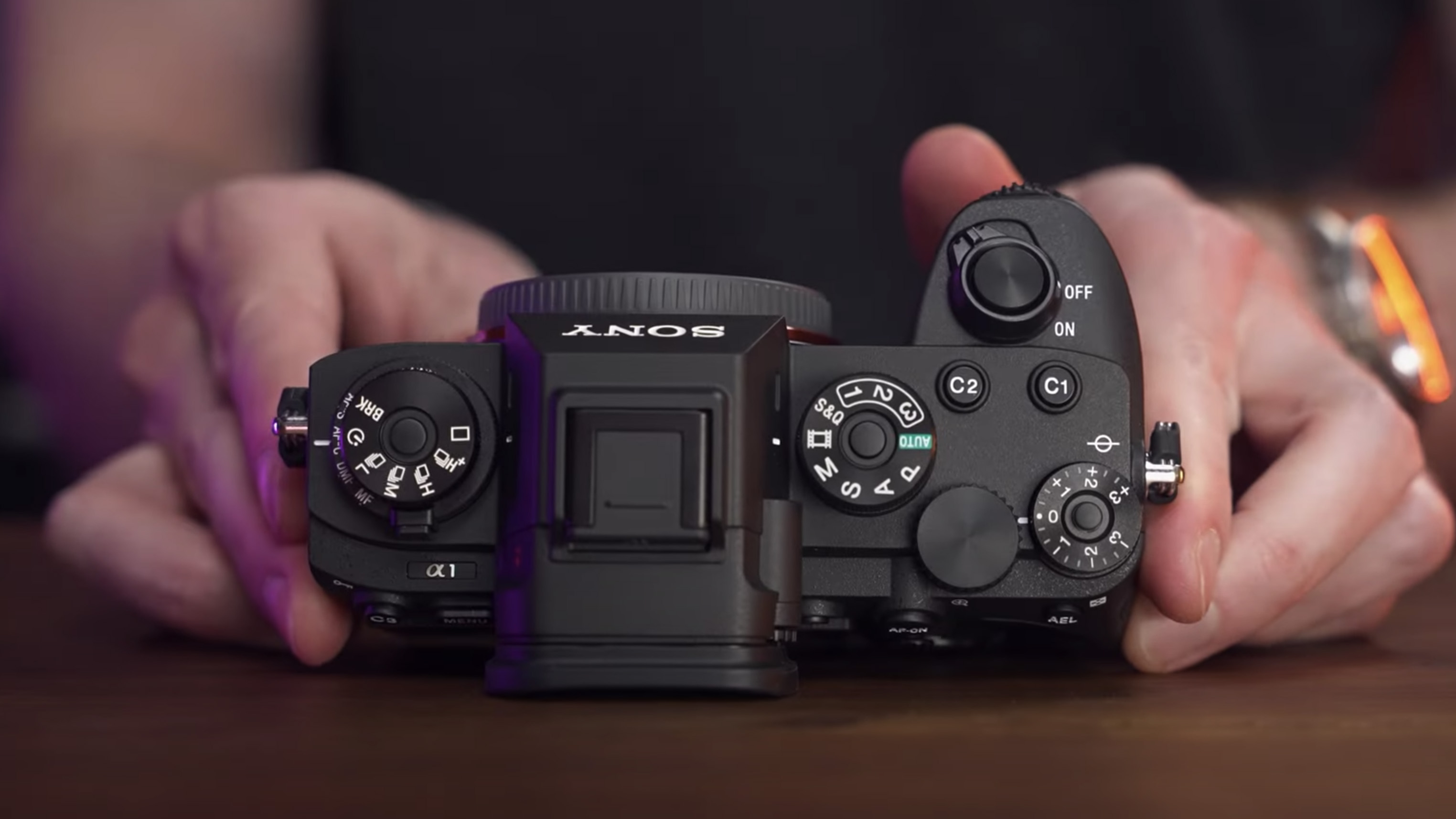
The second big revelation from Gerald Undone's tests was the Sony A1's 4K video performance, which was surprisingly even better than the video-focused Sony A7S III at low ISOs for noise performance. He found that "the biggest benefit it has over the A7S III, whether recording in 8K or the binned 4K, is the noise improvement at lower ISOs", with the A1 beating the A7S III's video quality at every ISO step up to ISO12800, which was when the A7S III took over.
As he concluded, this means the Sony A1 is "basically an A7S III with an 8K mode – and that's amazing". This praise extended to the Sony A1's overall picture quality, the final big insight, with Gerald Undone concluding that "in the color department, the Alpha 1 is Sony's best camera to date" and that its record dynamic range result of 13.2 stops (according to his tests) left him so "shocked at this result" that he "ran it two more times to check it wasn't a fluke".
The overall conclusion based on his early testing is that the Sony A1 is "one of those rare cases where the jack of all trades is somehow also better than the specified masters". But with the cost about the same as a Sony A7R IV and Sony A7S III combined, he'd still "rather have those two separate cameras than this one camera" for the money. So far, this seems to be a common conclusion from the early YouTube hands-on reviews.
Stills (Cameralabs): photo quality slightly better than Canon EOS R5
- Photo quality "a fraction better" than Canon EOS R5
- Stills are best shot below ISO 3200
- Pixel Shift mode useful in certain situations
One of the few channels to really pixel-peep the Sony A1's still image quality is Gordon Laing's Cameralabs, which reached some interesting conclusions based on some tests on a final production model.
Overall, he discovered that the A1 is "clearly capable of excellent photo quality, straight out of camera – arguably a fraction better than the Canon EOS R5", following some side-by-side ISO tests with the latter.
Those tests led the conclusion that you'll likely be best off shooting stills with the A1 "below ISO 3200 and, for the best quality, at ISO 400, or lower still." There wasn't a huge amount of difference between the Canon EOS R5 and A1, with the differences at higher ISOs more down to "different approaches to noise reduction", with the actual amount of recorded detail "pretty similar".
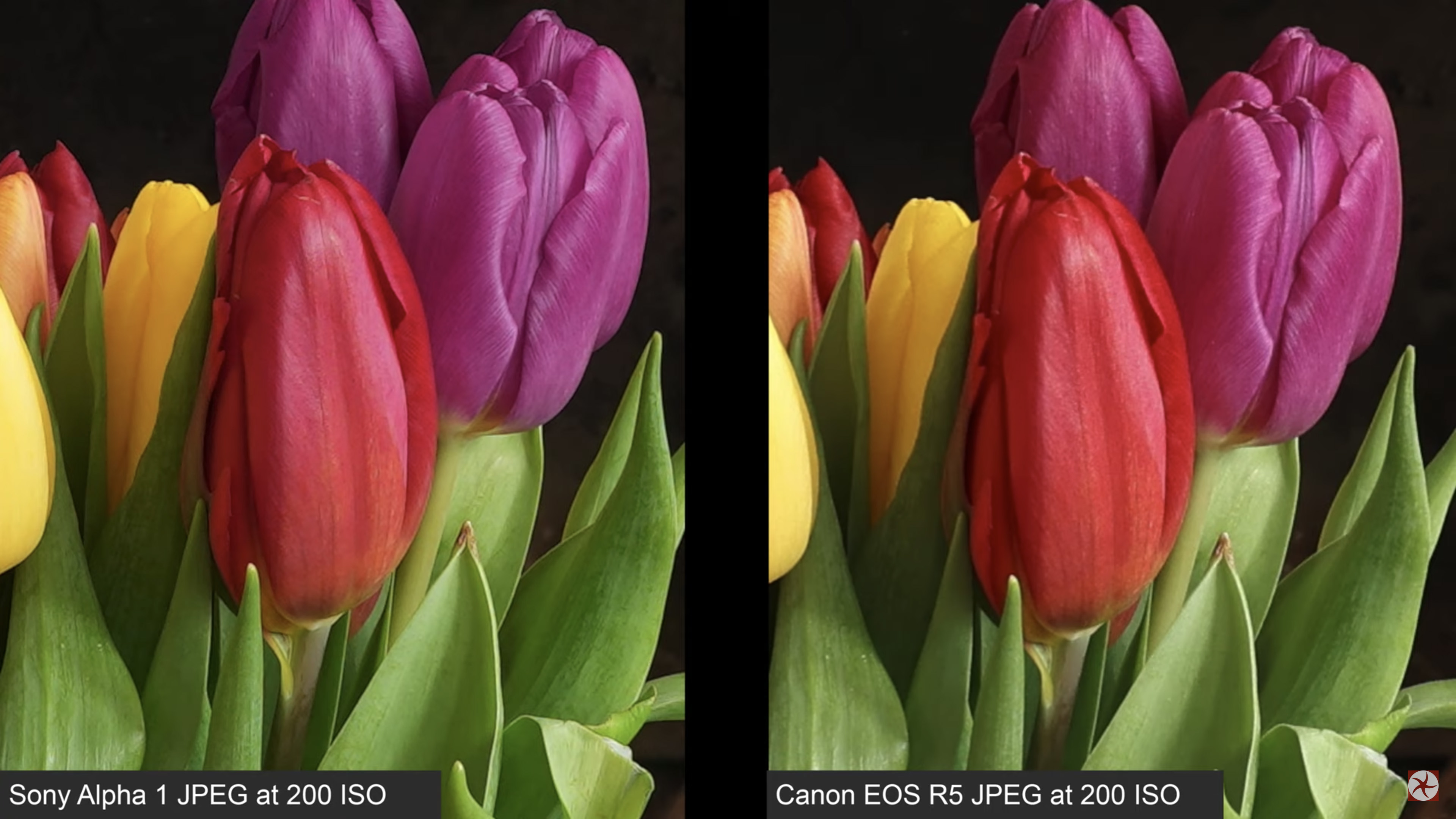
One advantage the Sony A1 does appear to have over its main rival, though, is its Pixel Shift mode. This lets you combine either four or 16 raw images to get even finer detail from your photos. Unfortunately, the Sony A1 doesn't yet piece these composites together in-camera, leaving to you do this later in Sony's Imaging Edge software (for Mac and PC).
The results, though, can certainly be worth the effort according to Cameralabs – in certain situations. While a still-life composite of some flowers dramatically improved the detail and reduced artifacts, an outdoor shot produced issues around anything in the scene that moved.
This led Gordon Laing to conclude that the Pixel Shift mode "remains best suited to completely static scenes shot from a sturdy tripod", but that it has "a lot of potential given the right subject and conditions" and is something that he thinks Canon should add to its high-end cameras. That's something we very much agree with and expect to see Canon address soon.
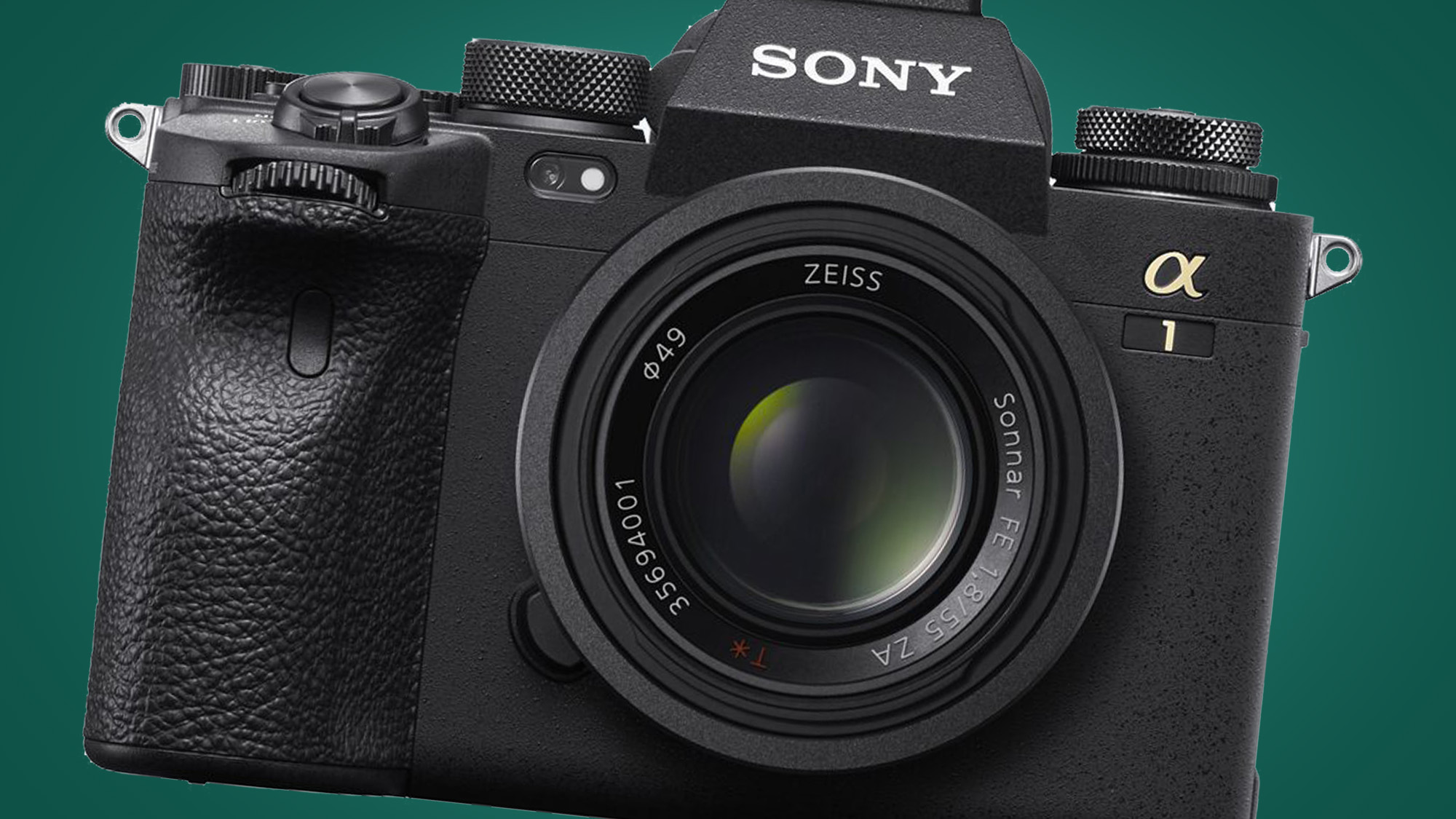
Takeaway
So is the Sony A1 starting to live up to its early hype, based on these early reports? While none of the tests can be considered full reviews, they do suggest that the signs are very promising indeed.
What we appear to have is effectively Sony's three pro Alpha cameras – the Sony A9 II, Sony A7R IV and Sony A7S III – in one body, with very few compromises. If this same conclusion is reached from full tests of a final production Sony A1, that would make it an incredible technical achievement.
In one relatively compact, Sony A9 II-sized body, you appear to get a class-leading EVF, hugely impressive burst-shooting powers, a very smart and reliable autofocus system, a Canon EOS R5-rivaling stills camera, and a genuinely usable 8K video camera with 4K performance that beats the Sony A7S III at low ISOs.
No camera is perfect, of course, with some of criticisms of the Sony A1 including its disappointing rear screen, overly familiar design, slightly mixed Bird Eye AF results, and a lack of in-camera Pixel Shift compositing.
But perhaps the bigger question is – will the Sony A1's hugely impressive technical chops make it a good buy, in practice? After all, the A1 costs only slightly less than a Sony A7R IV and Sony A7S combined, and more than a Canon EOS R5 and Canon EOS R6 put together.
As these early impressions have pointed out, most photographers and filmmakers are specialists in certain areas, which potentially makes the Sony A1 overkill for all but a fraction of content creators. But we're certainly looking forward to finding out for sure in our full review very soon.
- These are the best mirrorless cameras you can buy right now
from TechRadar - All the latest technology news https://ift.tt/3pSc8nx